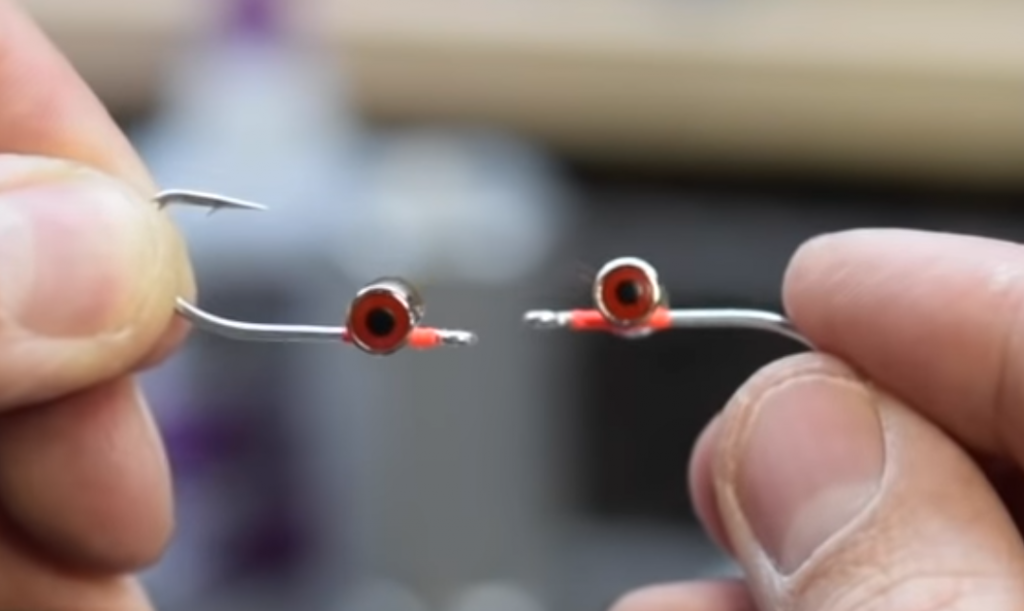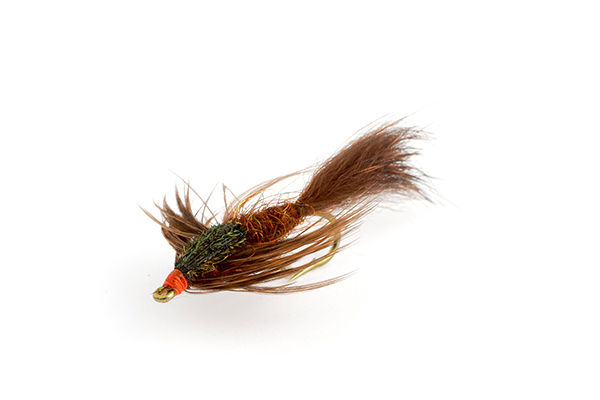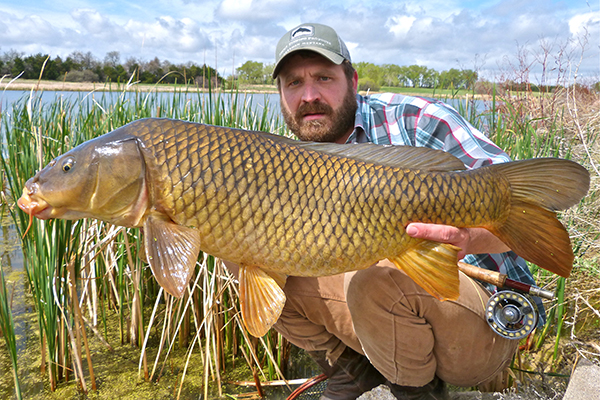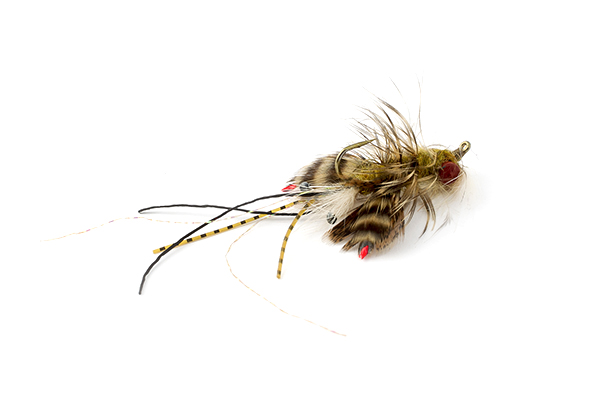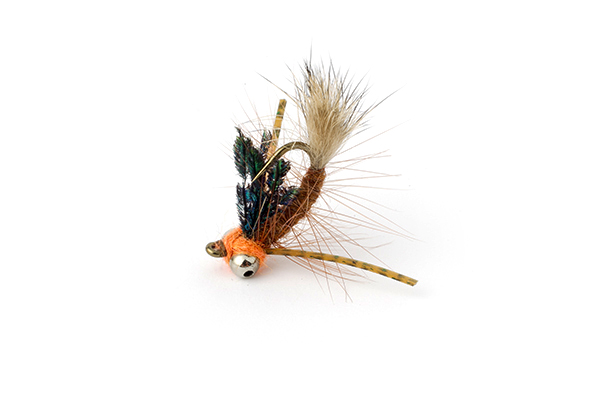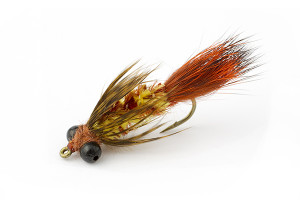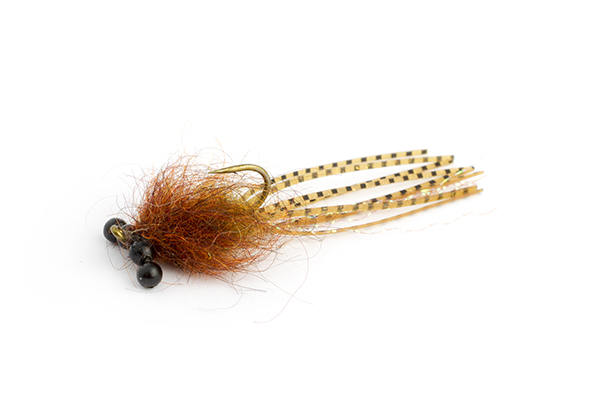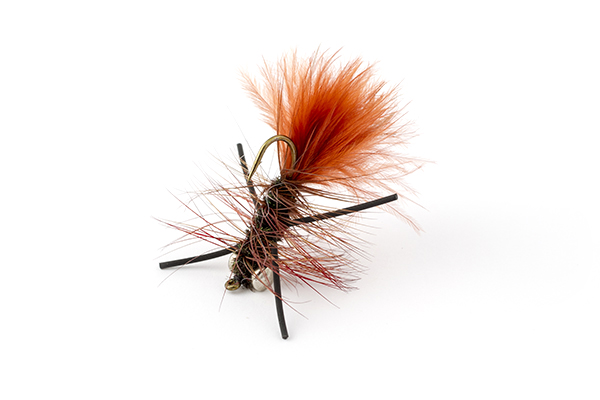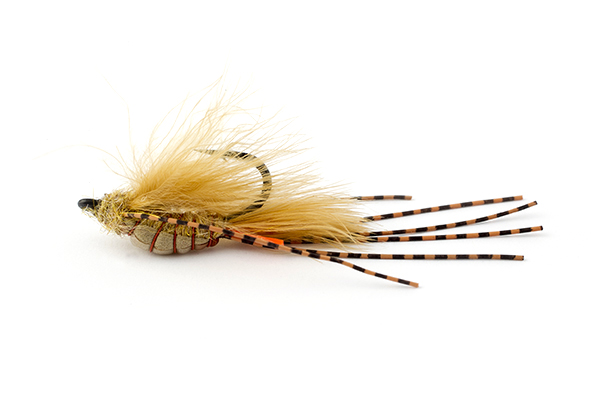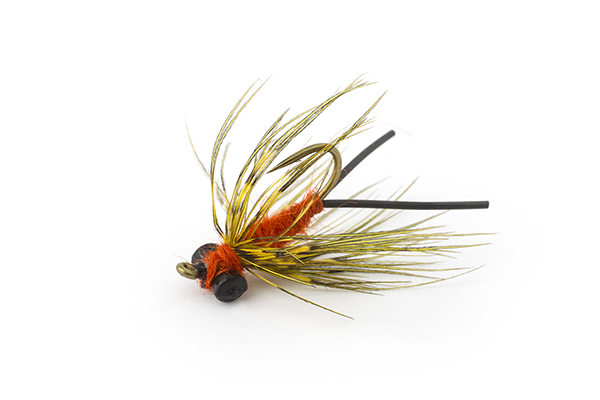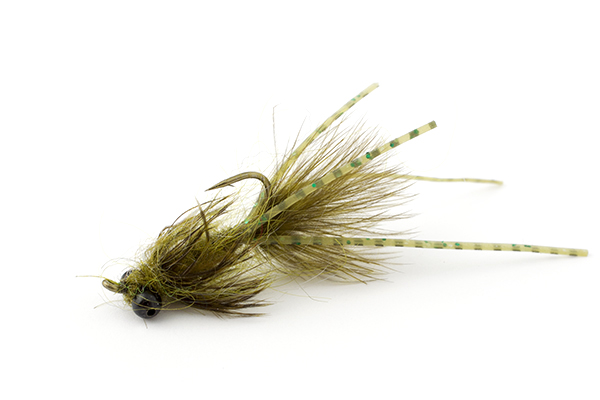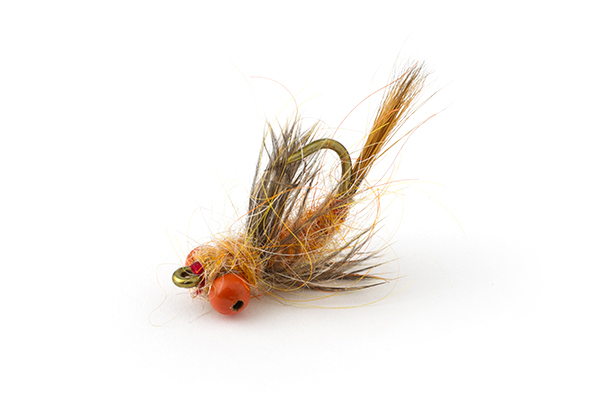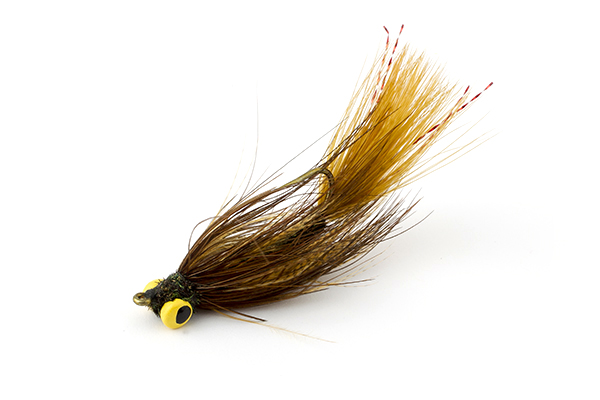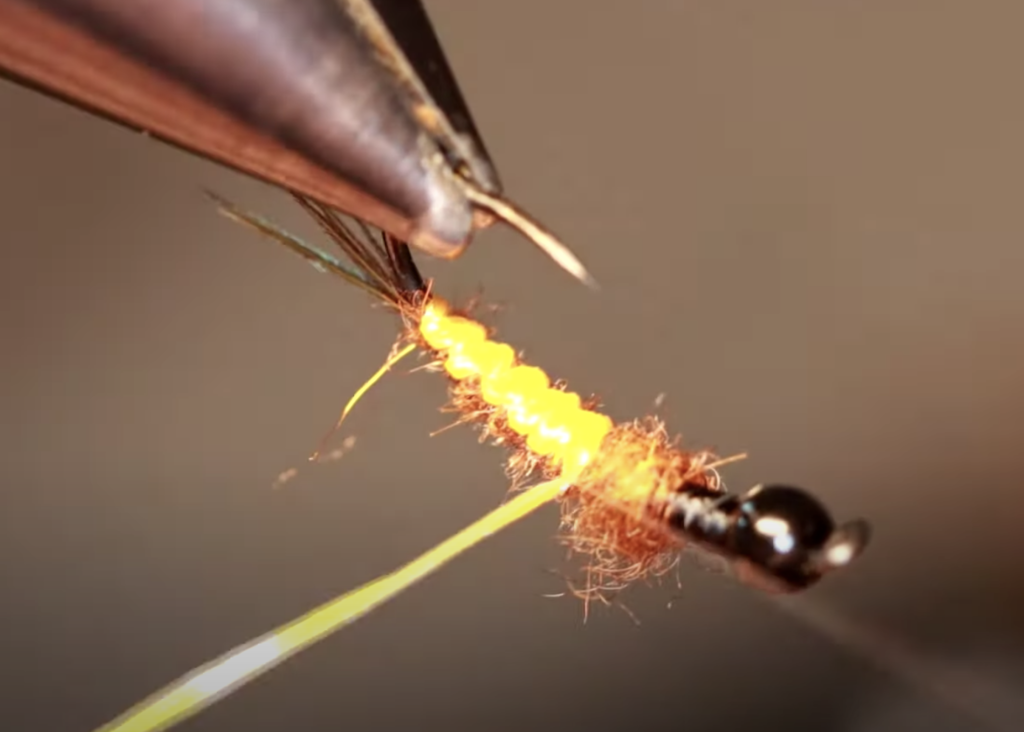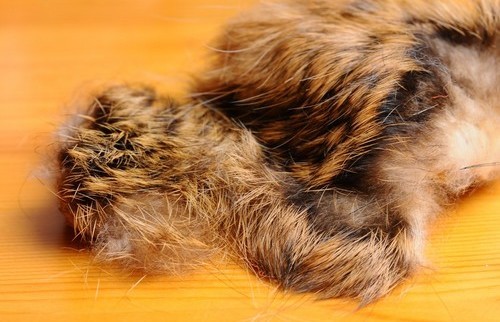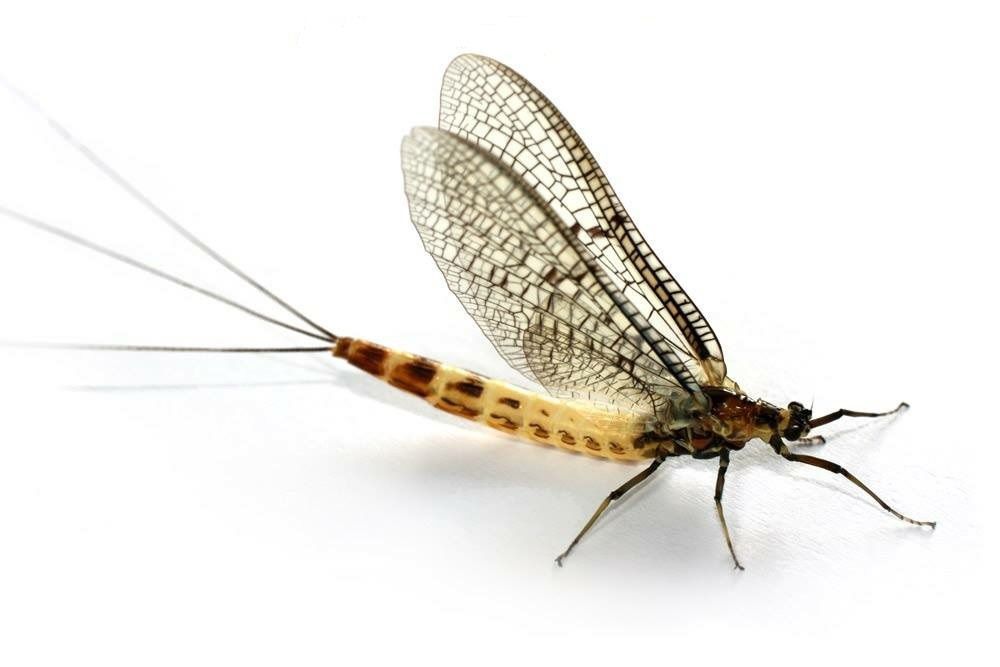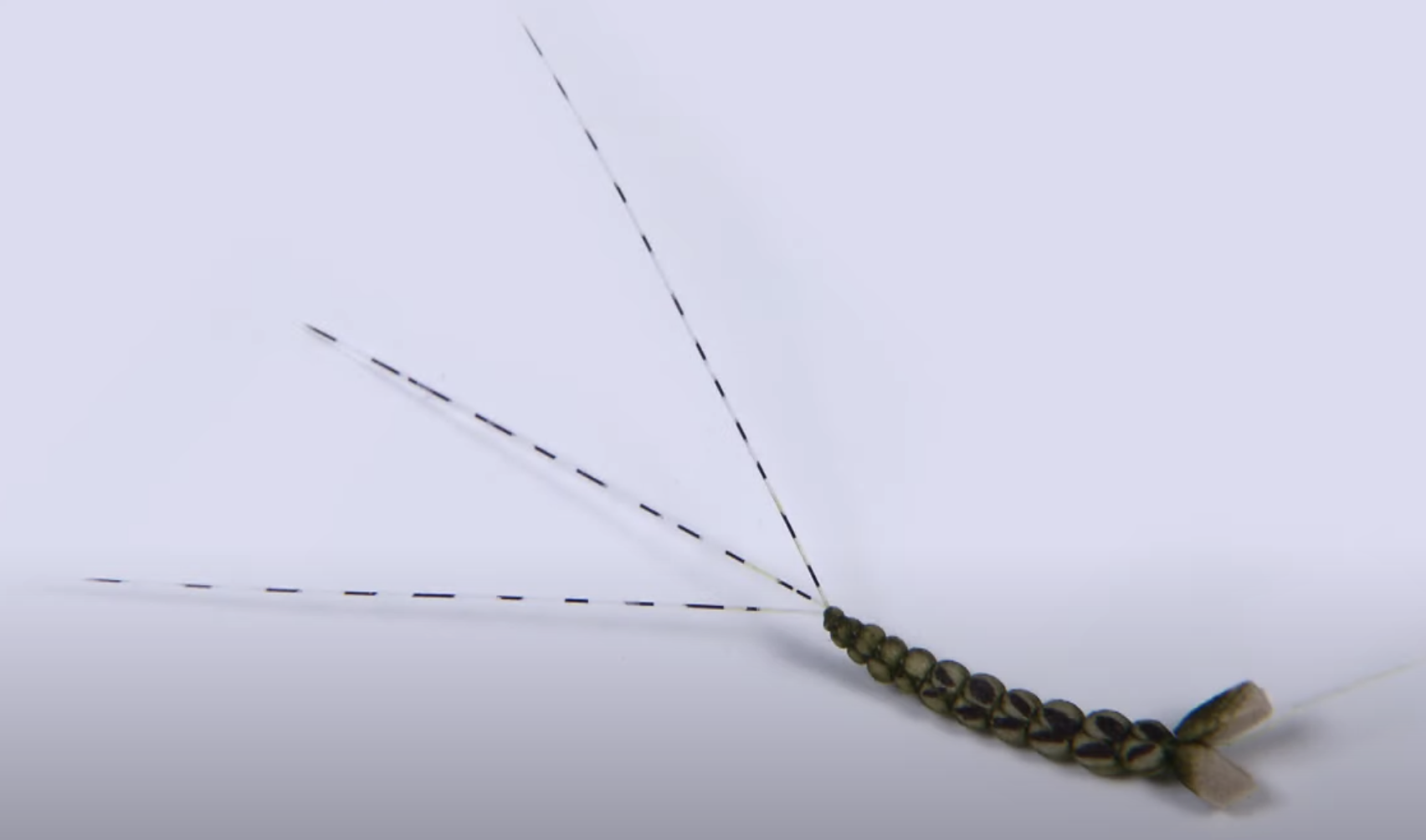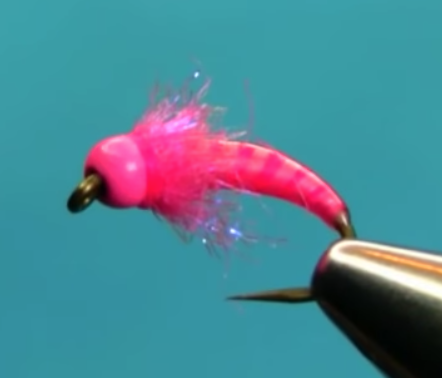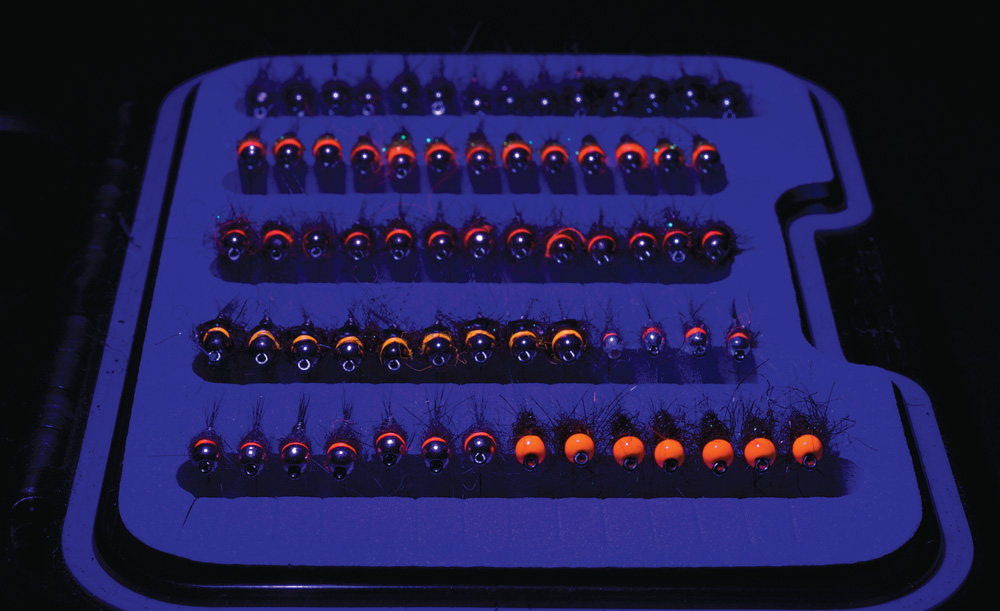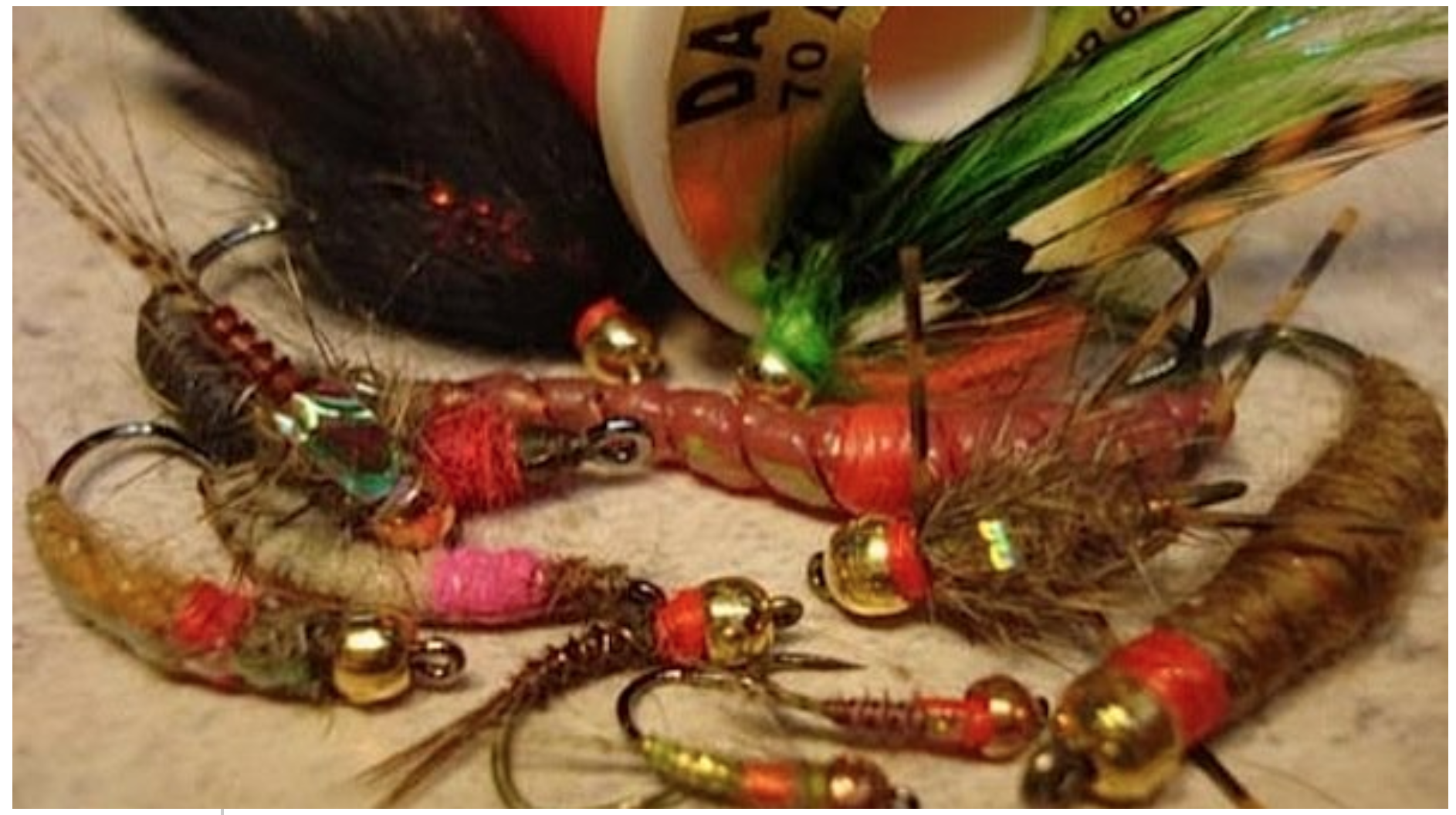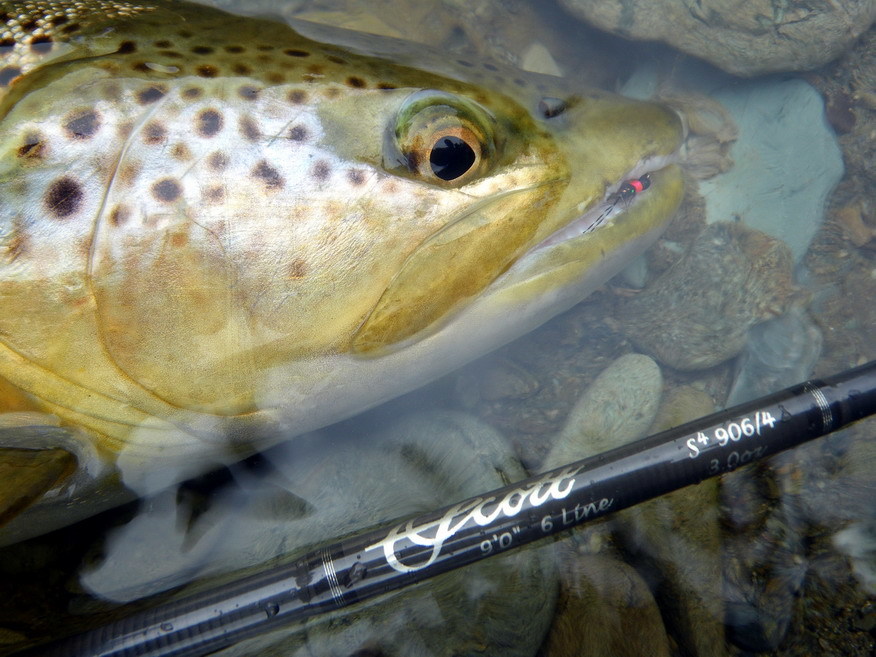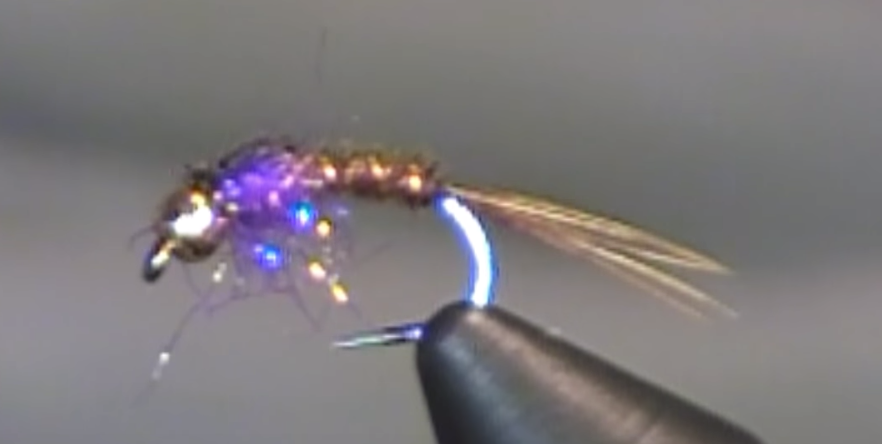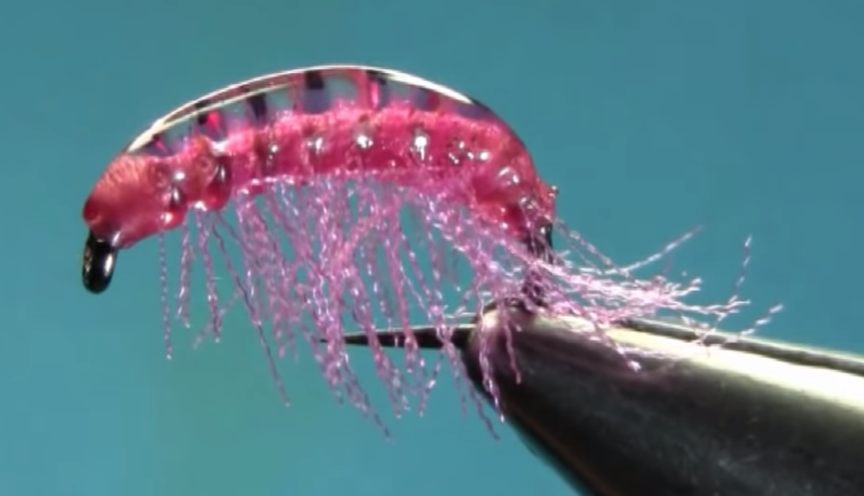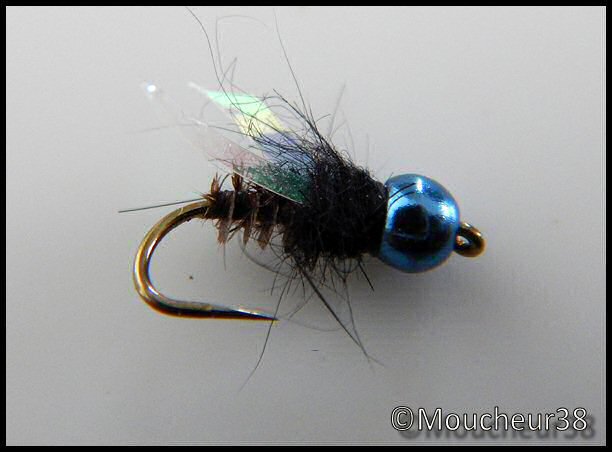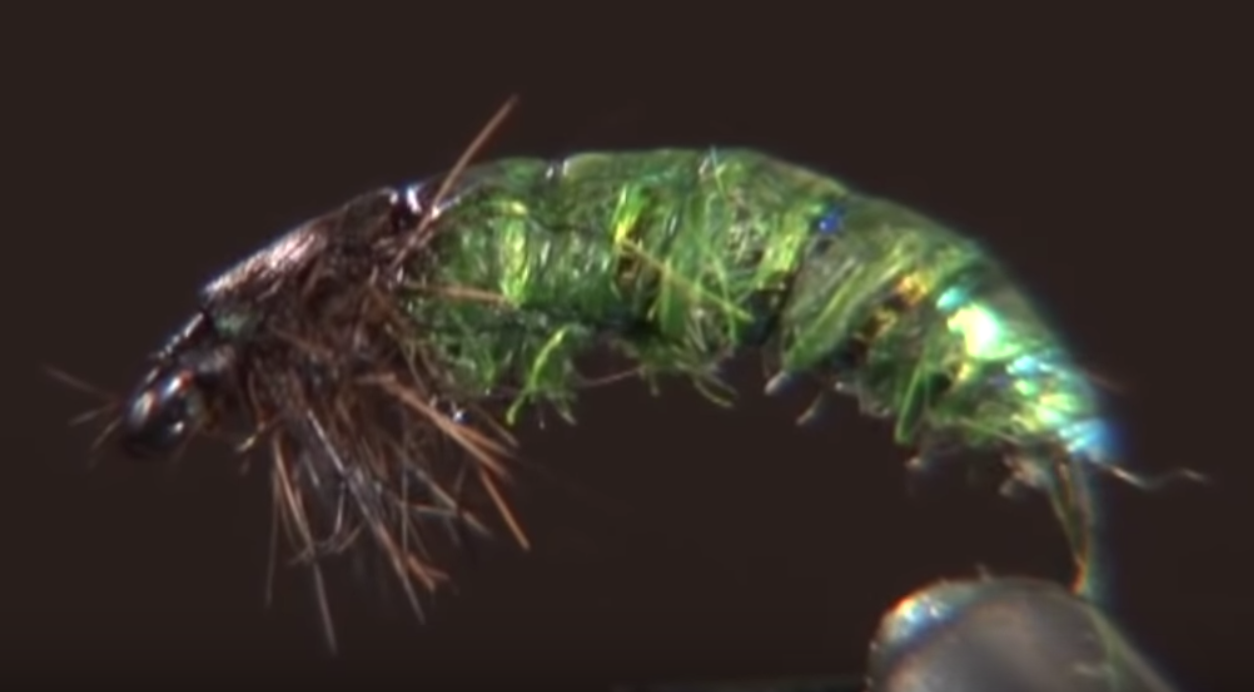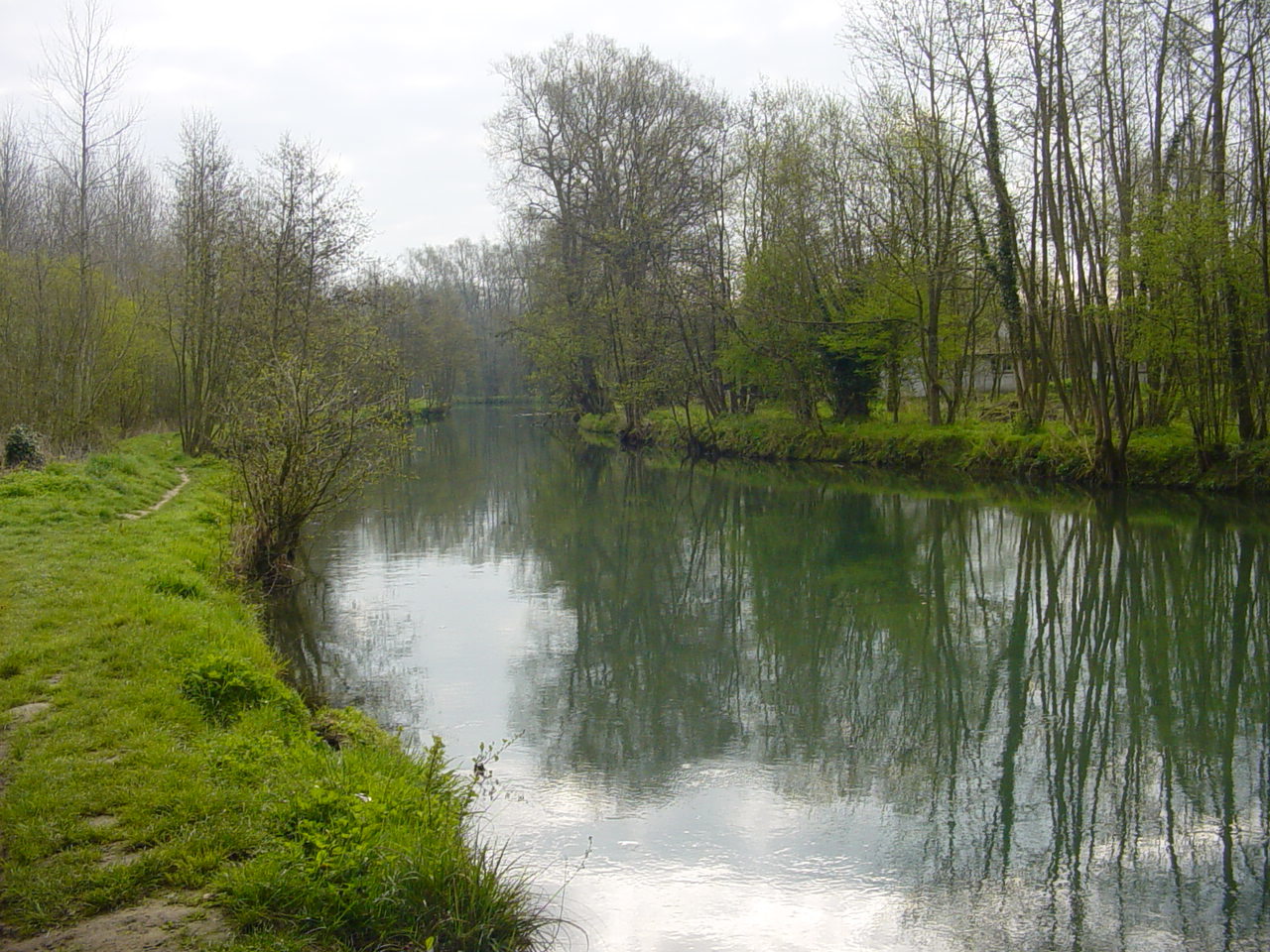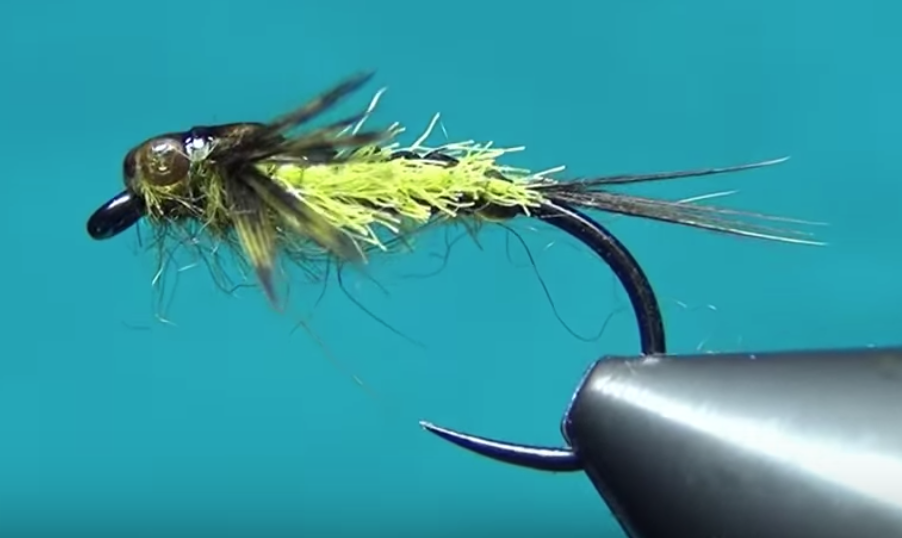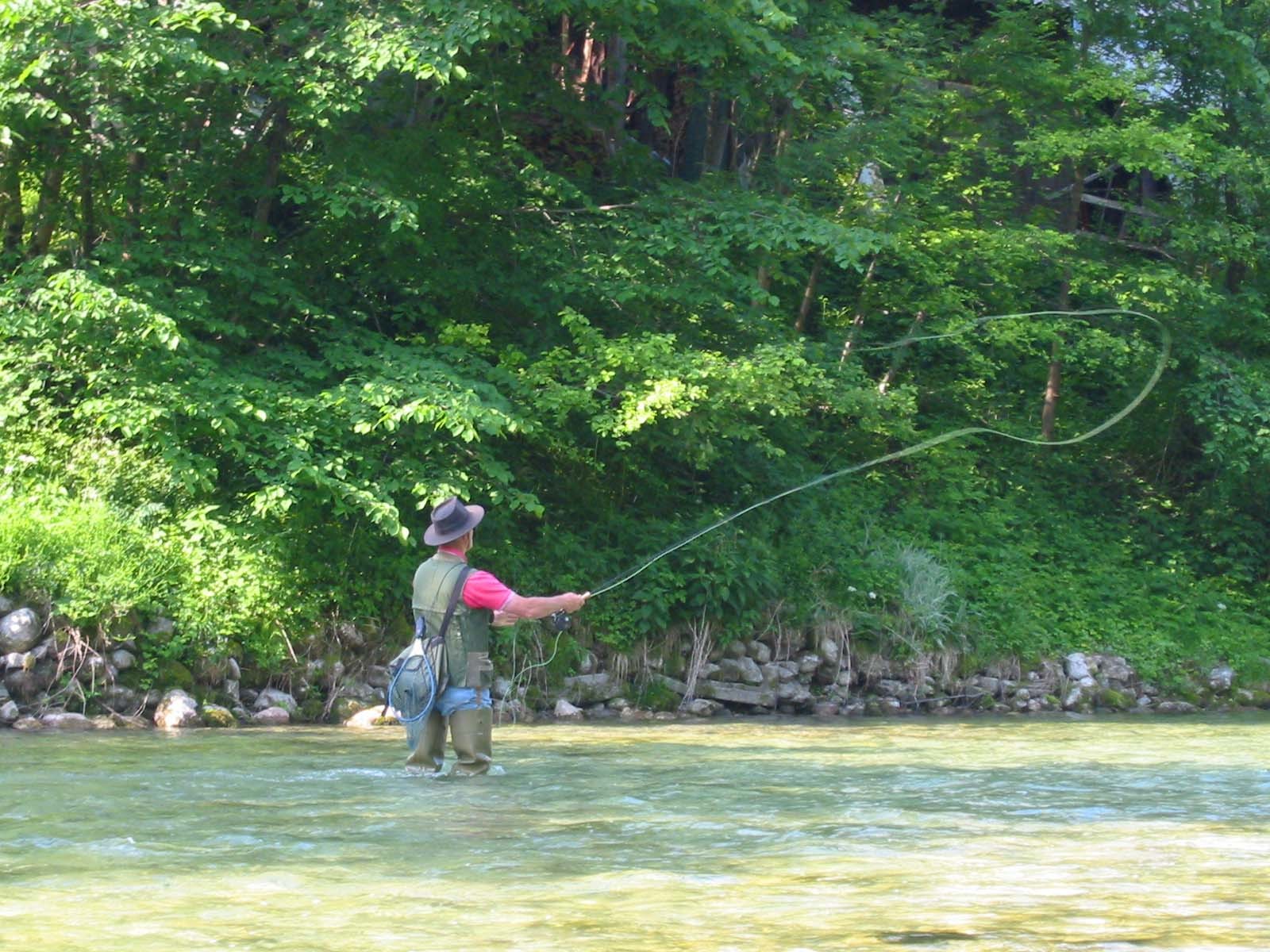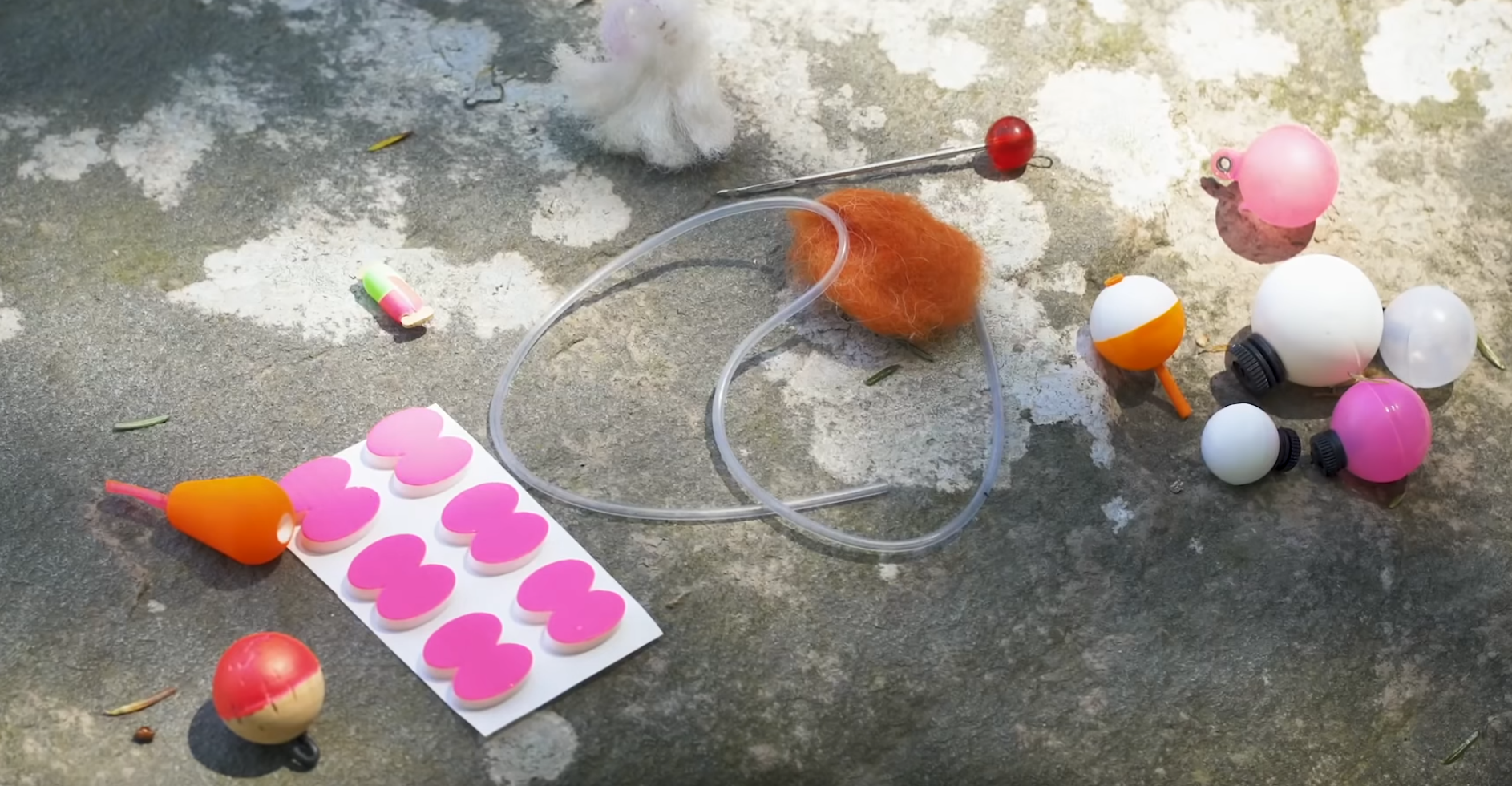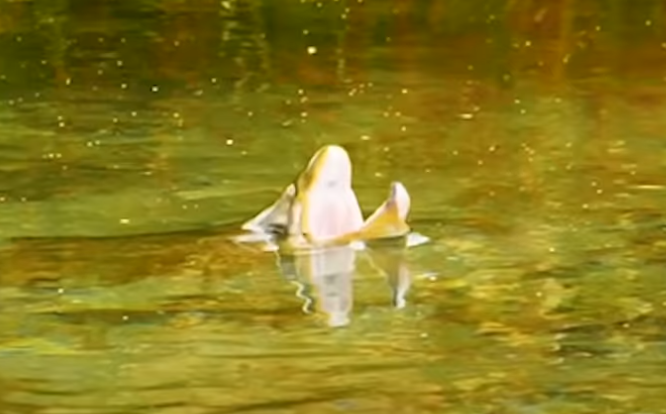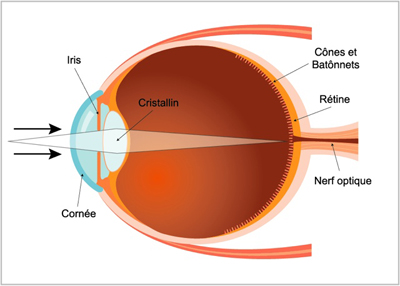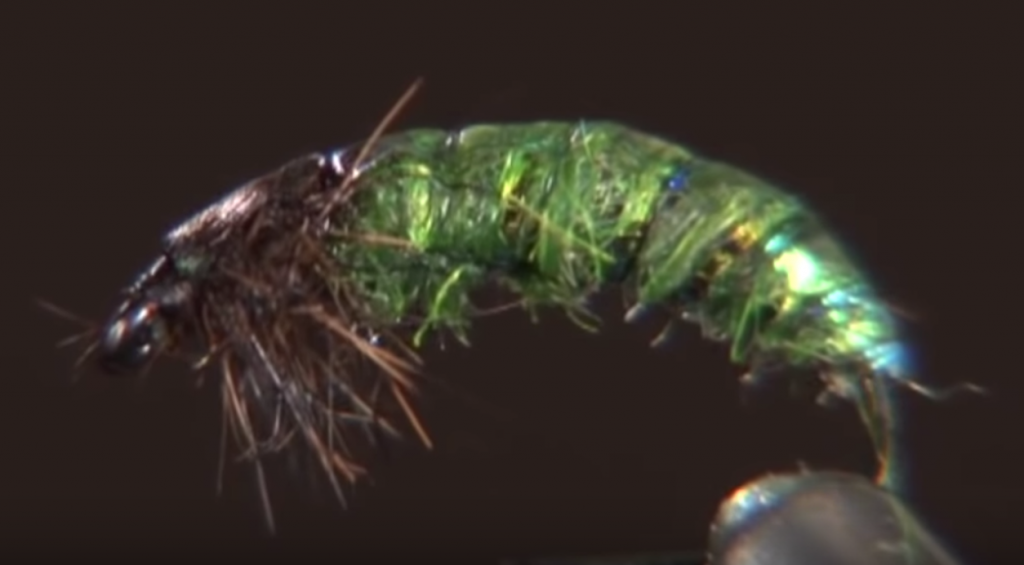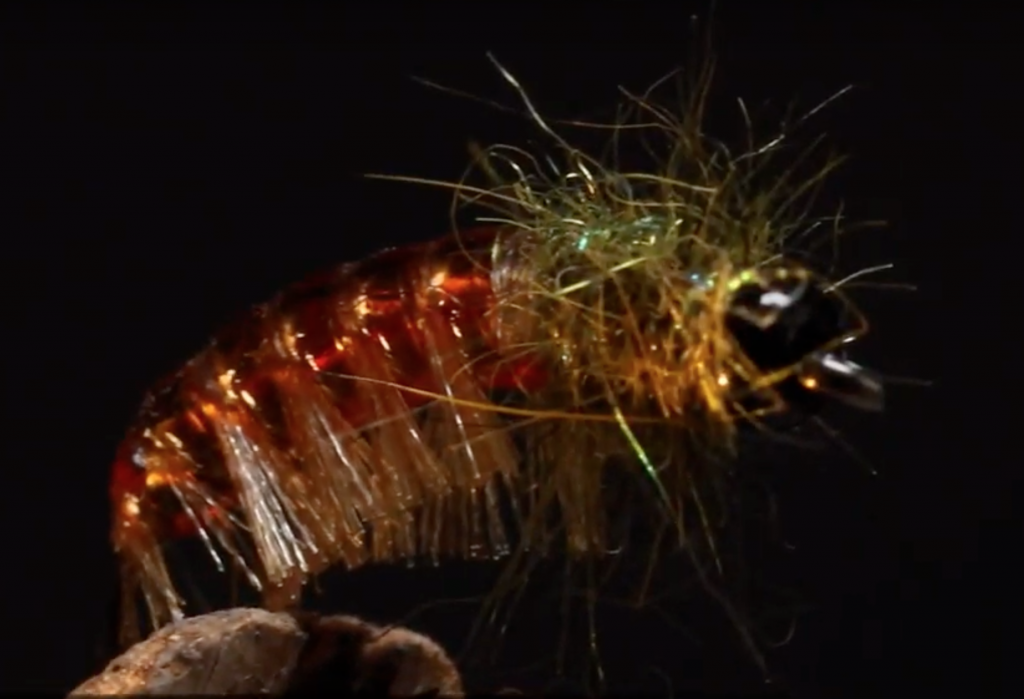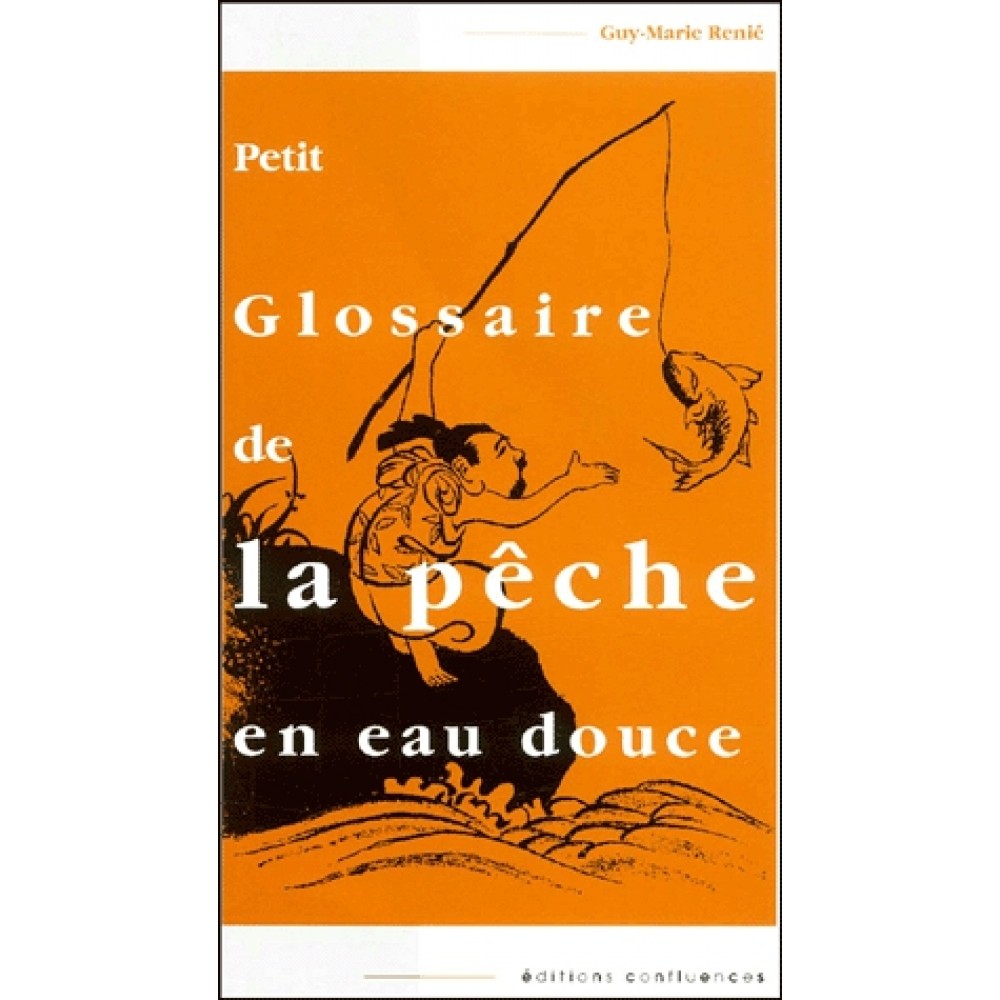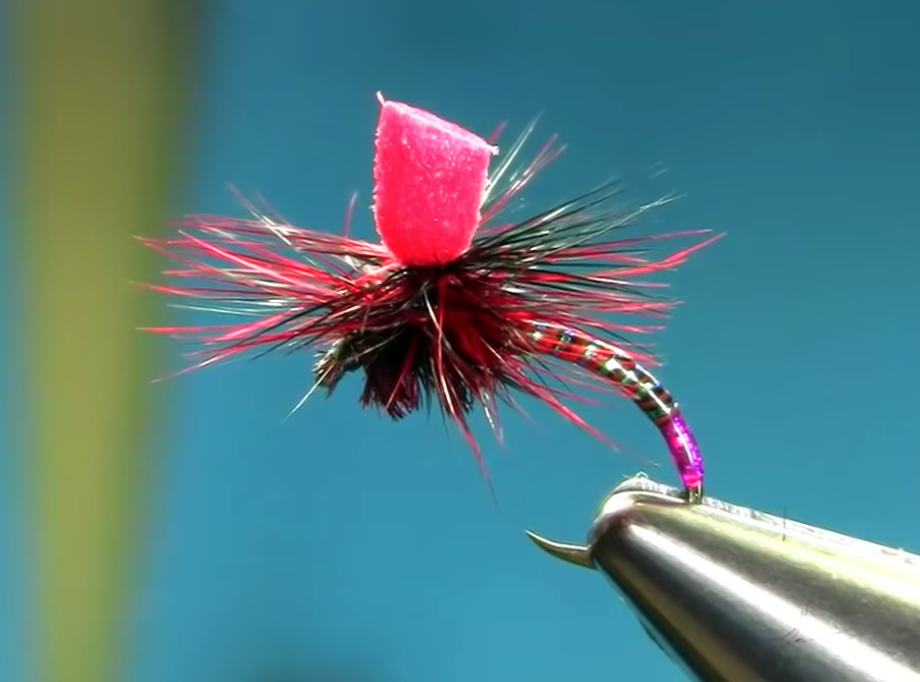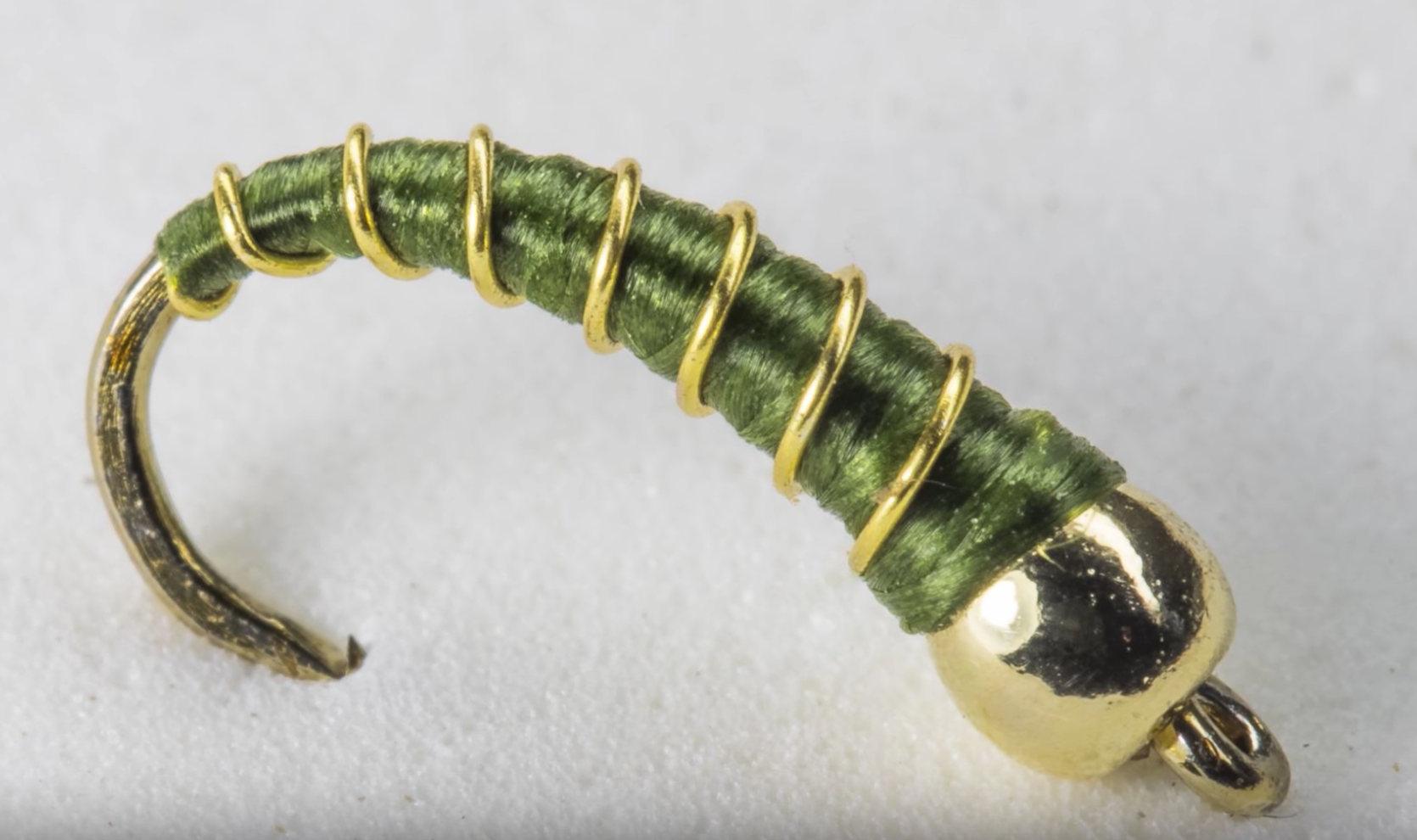TERMINOLOGIE DE LA PÊCHE À LA MOUCHE
(PAR ORDRE ALPHABÉTIQUE)
Termes anglais de pêche fréquemment utilisés
Traduction souhaitée?
Fly Fishing Lingo
Fly Fishing Terminology (in alphabetical order) par Redington :
A | B | C | D | E | F | G | H | I | J | K | L | M | N | O | P | Q | R | S | T | U | V | W | X | Y | Z
AAnadromous Fish: Fish that are born in freshwater, migrate to saltwater to grow and return to freshwater to spawn, such as salmon and steelhead.
Arbor: The center part of a fly reel where first backing and then line is wound (see Large Arbor, Standard Arbor, Mid-Arbor).
Arbor knot: A knot used for tying backing to the arbor of the fly reel.
Back to top
BBack Cast: In fly fishing, casting is a back-and-forth motion of the rod and line that allows you to place your fly where you'd like. The back cast is when your rod and line are behind you.
Backing: An added braided line that connects the reel's spool to the fly line. Since fly lines average 75-115 feet in length, the lines require backing for those adrenaline-charged times when a large fish runs out all of the regular fly line.
Barb: The backward facing projection cut into a hook.
Barbless: Barbless hooks are either manufactured without a barb or the barb is squeezed down using hemostats or pliers. 'Going barbless' makes it easier to remove a hook and minimizes the handling and potential damage to a fish you intend to release.
Beadhead: A style of fly utilizing a bead immediately behind the hook eye. Some beads help a fly sink, but others are floaters.
Blank: A hollow rod is called a blank. It has no guides, ferrules or reel seat. Fly rods are produced by wrapping sheets of fiberglass and graphite material around a carefully tapered steel rod (called a mandrel).
Blood Knot: The most widely used knot for tying two pieces of monofilament with similar diameters together; the best knot for construction of a knotted tapered leader.
Break off: A break off is that heartbreaking moment when an unusually strong or large fish snaps the line, typically due to an undersized tippet or worn leader, or a poorly tied knot.
Butt section: 1) the thicker end of a tapered leader that is tied to the fly line and 2) the last section of a rod, at the end of the handle.
Back to top
CCaddis: One of the three most important aquatic insects imitated by fly fishers 'the other two being mayflies and midges' found worldwide in all freshwater habitats. The adult resembles a moth when in flight; at rest the wings are folded in a tent shape down the back. The most important aquatic state of the caddis is the pupa, which is its emerging stage (see Larva, Pupa and Emerger).
Cast: This is the motion you make when you collectively 'throw' a fly rod, reel and line. There are different types of casting for different fishing applications. (See Back Cast, Overhead Cast, River Load Cast, Roll Cast, Water Tension Cast).
Casting arc: The path that the fly rod follows during a complete cast.
Catch and release: A practice within fly fishing intended as a technique of conservation. Fish should be fought quickly and never allowed to tire to the point of exhaustion to prevent injury or death. After capture, the fish is unhooked using wet hands ' or no touching if possible ' and forceps and returned to the water as quickly as possible. If necessary, resuscitate by pointing the fish's head upstream into the current and waiting until it swims off under its own power.
Chironomid: A scientific name for the members of the Diptera family of insects commonly known as midges. In the pupae stage they typically appear to be small aquatic worms. In addition to caddis and mayflies, one of the most important insects in a trout's diet.
Click Drag (or Click & Pawl Reel): A mechanical system on a fly reel used to slow down or resist the pulling efforts of a fish, so as to slow the fish down and tire it to the point where it can be landed.
Clinch Knot: A universally used knot for attaching a hook, lure, swivel, or fly to the leader or line; a slight variation results in the Improved Clinch Knot, which is an even stronger knot for the above uses.
Cone Head: Same as a beadhead but the bead is cone shaped.
Covering (or Delivery): Used to describe the action of casting the fly to a fish or into a promising-looking area of water.
Current Seam (or Seam): Current seams are formed by the nature of current flow. Usually the middle of a river or stream contains the fastest flow with its edges having slower flows due to friction with the bank and the streambed obstacles. A stream channel's curvature redirects its heaviest flow away from the remainder of the stream creating current seams.
Back to top
D Damselfly: An important still water aquatic insect most commonly imitated in the nymphal form, with hatches usually occurring in early to mid-summer. Adult looks similar to a dragonfly but smaller and folds its wings along its back when at rest.
Dead Drift: A perfect float in which the fly is traveling at the same pace as the current, used in both dry fly and nymph fishing (see Mending Line and "S" Cast).
Delivery (or Covering): Used to describe the action of casting the fly to a fish or into a promising-looking area of water.
Disc Drag: A mechanical system on more expensive fly reels intended to efficiently slow and tire a fish that is taking line. Resistance is created between discs that apply pressure as line is pulled from the reel. Different from the click drag, the disc drag is smoother and less likely to create a sudden stopping resistance that will break the line.
Dorsal Fin: The fin on the back of a fish, sometimes divided into two or three partly or entirely separate sections.
Double Haul: In this cast the fly fisher quickly pulls and releases the line on both the back cast and the forward cast. It is used to create greater line speed, enabling the caster to reach farther or cut through wind.
Double Taper (DT): A standard fly line design in which both ends of the line are tapered, while the greater portion or "belly" of the line is level. An excellent line for short to moderate-length casts and for roll casting, but not as well suited for distance casts.
Drag: (1) An unnatural motion of the fly caused by the effect of the current on line and leader. Drag is usually detrimental, though at times useful ' such as imitating the actions of the adult caddis. (2) Resistance applied to the reel spool to prevent it from turning faster than the line leaving the spool (used in playing larger fish).
Drag-Free Drift: This is accomplished when you minimize the effect of the current flow on the fly. This is equally important when fishing dry flies or nymphs. Trout are more likely to take food moving at the same speed as naturals being carried by the current and may even be spooked by flies moving too fast or too slow.
Drift: Four types of drifts: Straight upstream from you, upstream and across from you, downstream and across from you, straight downstream from you (see Fishing the Drift).
Dropper: A practice of fishing two flies at the same time, often one on the surface and a second underwater. A classic combo like the 'Hopper-Dropper' features a dry fly grasshopper pattern with a small nymph or emerger pattern tied off the bend of the hook. A dropper effectively doubles your chances of finding which type of insect and imitation fly the fish are keying on.
Dry Fly: Any fly fished upon the surface of the water, usually constructed of non-water-absorbent materials. Dry flies are most commonly used to imitate the adult stage of aquatic insects.
Dry Fly Floatant: Chemical preparation that is applied to a dry fly to waterproof it immediately before use; may be a paste, liquid, or aerosol.
Dun: (1) First stage in the adult mayfly's life cycle, usually of short duration of 1 to 24 hours. This is the stage most often imitated by the dry fly. (2) A darkish gray-blue color that is very desirable in some fly tying materials.
Back to top
EEddy: A section of water that is less disturbed than the surrounding water, often found on the edge of a current or where two streams converge.
Elbow Control: The idea in the overhead and roll cast is to obtain a tight, wind-cutting loop that will roll line accurately to the target. To achieve a tight loop, maintain your elbow on a constant level as you move the rod from the pickup, to the back cast, to the forward stroke. Holding the elbow "on the shelf" is much easier done when the feet are placed as described in the Stance. When your upper body can pivot with little constriction as you move the rod back and forth, the elbow will almost automatically stay in a constant plane.
Emerger: Pertaining to aquatic insects, the name used to describe that time frame when the nymph reaches the surface and the adult hatches out. The emerging nymph may well be the single most important nymph phase for the fly fisher to imitate.
Back to top
FFalse Cast: A standard fly fishing cast used to lengthen and shorten line, change direction and to dry off the fly; frequently overused. In false casting, the line is kept moving backward and forward without being allowed to touch the surface of the water or the ground (see Casting Arc, Back Cast, and Forward Cast).
Ferrule: A collar that is found at the point where sections of a fly rod are joined. The end of one section fits inside the end of another, in an overlapping fashion at the ferrule.
Fingerling: A small, immature fish, such as a juvenile trout.
Fishing the Drift: This is the process of fishing from your target point to where you will pick up the line for your next cast. If you chose your initial casting position carefully, you can get a long drift, maximizing your chance of catching a fish.
Fish Ladder: A series of interconnected pools created up the side of a river obstruction, such as a dam, to allow salmon and other fish to pass upstream.
Floatant: A water-proofing (usually oily) salve or cream that is used to help flies, leaders and fly lines float.
Floating Fly Line: The best all-around fly line in which the entire line floats (see Double Taper, Level, Shooting Head, Weight Forward).
Fluorocarbon: Tippet or leader material that is virtually invisible underwater, sinks quickly and doesn't reflect light on the water surface so fish can't see it.
Fly: A hand-tied artificial lure imitating natural insects or baitfish to entice fish. Flies incorporate different natural and synthetic materials wound onto or otherwise secured on hooks.
Fly Casting: A standard method of presenting a fly to a target using a fly rod and fly line, involving many different casts (see Back Cast, Forward Cast, False Cast, Roll Cast, "S" Cast, and Shooting Line).
Fly Line: Special line designed for fly fishing. It is made of a tapered plastic coating over a braided Dacron or nylon core; available in several tapers and in floating, sinking and sink-tip styles (see Double Taper, Shooting Head, Weight Forward, Sink-tip, and Floating Fly Line).
Fly Pattern: Also called a 'recipe,' this is the fixed design of materials and positioning of parts that make up an artificial fly.
Fly Reel: Fishing reel used in fly fishing to hold the fly line.
Fly Rod: A type of fishing rod especially designed to cast a fly line. Fly rods differ from other types of rods in that the reel attaches at the butt of the rod with the rod handle always above the reel. Fly rods usually have more line guides than other types of rods of the same length. Fly rod lengths vary, with common lengths being between 7 and 9 feet. Materials used in fly rod construction are bamboo, fiberglass, and graphite.
Fly Tying: The process of building fishing flies by hand using thread and various natural and synthetic materials.
Forceps: A hand-operated medical instrument widely used in fly fishing to remove flies from the jaws of a hooked fish. Smooth or lightly serrated jaws utilize a ratchet-locking mechanism to clamp onto the hook until you release them. Also called hemostats.
Forward (or Power) Stroke: In fly fishing, casting is a back-and-forth motion of the rod and line that allows you to place your fly where you'd like. The forward cast (or stroke) is when your rod and line are cast in front of you, toward your target. Imagine a clock on the wall to your right (casting instructions are the same for right or left-handed casters). Keeping the forearm, wrist, upper arm and shoulder in the same plane as the back cast, drive the whole arm forward, loading the rod. Continue the forward (power) stroke until the rod reaches the ten o'clock position. Then let the rod tip drift down slightly and let go of the line with your non-casting hand, shooting the line toward your target. (see Power Stroke)
Forward Taper: (see Weight Forward).
Foul Hook: To hook a fish anywhere but in the mouth.
Freestone: A type of river or stream with a significant gradient, resulting in medium to fast-moving water. Although the upper reaches of a freestone stream may be spring-fed, the vast majority of its flow comes from run-off or tributaries. The fast-moving water inhibits the growth of weeds or other rooted vegetation resulting in a 'Free Stone' bottom. Less fertile than spring creeks, freestone streams have smaller and less diverse aquatic insect populations. Fewer bugs in faster water usually results in fewer but more opportunistic trout.
Fry: The first stage of a fish after hatching from an egg.
Back to top
GGel-spun polyethylene: A synthetic fiber that is extremely thin, supple, slippery, abrasion resistant and strong. Stronger than steel for its size, it is often used as a braided fly line backing where large amounts of backing are needed and space on the reel is limited.
Graphite: The most popular rod-building material in use today, graphite offers the best weight, strength and flex ratio of any rod building material currently available.
Gravel Guards: Flaps on each wader leg that hook over wading boots to further secure the waders and to prevent debris from getting inside the wading boots. Most waders today have built-in gravel guards with elastic bottoms and hooks to keep wader leg in place.
Grip: The cork handle of a fly rod, generally made of cork rings shaped in several different ways including a cigar grip, full-wells grip and half-wells grip. To grip: First locate the balance point of the rod by placing the rod on the edge of the index finger with the reel pointing down. The balance point is where the rod is level or close to it. This point is generally about 1/4 to 1/2 inch back from the front of the cork grip on most rods.
Back to top
HHatch: A large number of flies of the same species.
Haul: A pull on the fly line with the non-casting hand to increase the line speed to gain greater distance. This is done effectively during line pickup (see Double Haul).
Headwaters: An upstream section of the river before the main tributaries join it. This section is typically much smaller in width and flow than the main section of the river.
Hemostat: A clamp or forceps used by fly fishermen to remove flies from the mouths of trout.
Hook: The foundation upon which the fly is tied. Hooks are made from steel wire and are either bronzed, cadmium coated, or stainless. Hook designs are variable; the style used depends upon the type of fly being tied. Hook sizes range from tiny to huge and to a degree are standardized based upon the gap ' or gape ' defined as the distance between the hook shank and the hook point.
Hook Keeper: Made of a loop of thin wire built into the shaft of the fly rod near the grip, a keeper safely secures the fly while still attached to the line. This prevents losing the fly to streamside foliage and grasses on the walk to the next promising spot.
Back to top
IImitative Flies: Tied to more closely match specific insects, imitative flies are most effective on finicky trout living in clear, fertile, slow-moving streams supporting large populations of aquatic insects.
Impressionistic Flies: Tied to loosely suggest a variety of insects or insect families, impressionistic flies are usually most effective in streams with medium to fast water with less dense populations of aquatic insects.
Improved Clinch Knot: One of the most widely used fishing knots, it provides a good method of securing a fishing line to a hook, lure, or swivel.
Indicator (or Strike Indicator): A floating object placed on the leader or end of the fly line to "indicate" the take of the fly by a fish or to indicate the path of the drift of the fly. Made of materials such as floating putty, poly yarn (soaked with floatant), foam and rubber, strike indicators are very effective when nymph fishing with a slack line.
Back to top
JJumping Rise: This is when a trout comes out of the water to catch a rising insect, possibly indicating a caddis hatch is occurring.
Back to top
KKnotless Tapered Leader: A fly fishing leader entirely constructed from a single piece of monofilament.
Knotted Leader: A fly fishing leader constructed by knotting sections of different diameter leader material to each other to make a tapered leader. Most commonly used knots to construct such a leader are Blood (or Barrel) Knot and Surgeon's Knot (see Blood Knot, Surgeon's Knot, Leader, Tapered Leader, Leader Material).
Back to top
LLarge Arbor: Compared to a standard fly reel's narrow 'arbor,' the diameter of the line-holding area on a large arbor reel is a wider. This important design difference greatly increases line retrieve rate. With the large arbor reel, fly fishers are able to consistently strip off long lengths of slack line for casting, and then reel it up quickly when playing a fish or moving to a different spot. Bigger coils of line coming off the reel allow for easier casting with fewer tangles. Also, a large arbor reel's drag works more soundly because as a fish pulls out line, the effective spool diameter remains nearly constant.
Larva: The immature, aquatic, growing-stage of the caddis and some other insects. Many species of caddis larva build a protective covering of fine gravel or debris to protect them in this stage. The larva is a bottom-dwelling, non-swimming stage of the insect.
Lay Down (after the pick-up): A fly fishing cast using only a single back cast. The line is lifted from the water and a back cast made, followed by a forward cast that is allowed to straighten and fall to the water, completing the cast (see Pickup).
Leader: The section of monofilament line between the fly line and the fly. It is usually tapered, so that it will deliver the fly softly and away from the fly line (see Knotted Leader, Knotless Tapered Leader, Turn-over, and Monofilament).
Lie: The areas in a river or lake where fish hang out, optimum lies are typically out of the main current, present cover from predators or provide a good source of insects and other food.
Line Weight: The weight of the first 30 feet of a fly line determines the line weight of a rod or reel. This measurement system is used as a way to standardize fly lines in matching them to fly rods of differing stiffness. Line weighting is not a linear numbering system; the first 30 feet of a #6 weight line weighs 160 grains, while the first 30 feet of a #3 weight line is 100 grains.
Loading the Rod: When either a forward or backward cast is made, the weight of the line puts a bend in the rod thus 'loading' or storing the energy necessary for the ensuing forward or backward cast.
Loop to Loop: A way to connect a fly line and a leader by making a loop at the end of the leader ' using a Perfection Loop knot ' and joining it to a loop at the end of the fly line. Loop-to-loop connections are sometimes made from a leader to a tippet.
Back to top
MMatching The Hatch: An attempt by a fly angler to select an artificial fly that imitates the color, size, shape and behavior of natural insects that fish are feeding on at a particular time. Often when a hatch is happening, fish become very selective and refuse insects that do not match the predominant insects present.
Mayfly: Commonly found in cold or cool freshwater environments, mayflies are the most commonly imitated aquatic insects worldwide. Most dry fly and nymph patterns imitate these insects. The nymph stage of the mayfly lasts approximately one year; adult stages last one to three days. The adult has one pair of upright wings, making it look like a small sailboat.
Mid-Arbor: This refers to the size of area of a reel that holds the fly line. A mid-arbor reel is your 'middle' option between a standard arbor reel and a large arbor reel. A mid-arbor design gives you a large line capacity plus the added benefits of rapid retrieve and reduced line coiling over a standard arbor.
Minimizing Stream Current Drag: Mending your line by throwing a loop of line into the drifting line can help it to move at the same speed as the current, reducing current drag. Depending on the cast and the drift situation, appropriate mends may be upstream, downstream, or a series of 'S' mends.
Mending Line: A method used after the line is on the water to achieve a drag-free float. It constitutes a flip, or series of flips with the rod tip, that puts a horseshoe shaped bow in the line. This slows the speed with which the line travels if mended upstream and speeds up the line if mended downstream. For example: If a cast is made across the flow of the stream and the fastest part of the current is on your side of the water, an upstream mend would be required to slow the rate of the line's drift downstream. Thus, your line will better keep pace with the fly traveling in the slower water on the far side of the main current.
Monofilament: A clear, supple nylon filament used in all types of fishing that is available in many breaking strengths and diameters (see: Breaking Strength).
Back to top
NNail Knot: A method used to attach a leader or butt section of monofilament to the fly line and of attaching the backing to the fly line; most commonly tied using a small diameter tube ' such as section of a plastic coffee stirrer ' rather than a nail.
Narrow Loop: As the fly line travels through the air it should form a narrow loop to cut wind resistance. In appearance a narrow loop resembles the letter "U" turned on its side and is formed by using a narrow casting arc.
Nymph: The immature form of insects. As fly fishers, we are concerned only with the nymphs of aquatic insects.
Nymphing: Describes fish actively feeding on nymphs as well as the method of fishing imitation nymph patterns ' typically weighted flies and added split-shot on the leader fished under a strike indicator ' to catch them. In riffles and other shallow areas of a river, a fly angler wearing polarized glasses may see the silvery 'flash' of a feeding trout trying to dislodge nymphs from rocks or quickly moving to take naturals drifting with the current.
Back to top
0Open Loop: The signature cast where the loop 'opens' as it travels through the air. A common malady for new casters, an open loop is caused by a very wide casting arc, resulting in increased wind resistance on the line and decreased accuracy.
Overhead Cast: This is the traditional fly rod cast most people associate with fly fishing. It is used for presentation of everything from nymphs and streamers to wet flies and dry flies. The Basic Overhead Cast has five parts: Pause, Pickup, Back Cast, Power or Forward Stroke and Shooting the Line
Back to top
PPalming: Gently applying the palm of your hand against the spool edge of a fly reel is an effective method to help slow the release of line when fighting large fish.
Pause: This is the part just before you begin your pickup. Allow a moment for the river current to straighten your line below you. This makes it easier to perform the pickup. Strip some line toward you and hold it in your non-casting hand in loose coils, or larger coils at your feet if making longer casts (this retrieved line is for shooting toward the target).
Pectoral Fins: The pair of fins just behind the head of a fish.
Pelvic Fins: The pair of fins on the lower body of a fish; also called ventral fins.
Perfection Loop: This is a knot often used to create a loop in a piece of monofilament, frequently at the butt end of a leader for the loop-to-loop connection.
Pickup (and Lay Down): In this part, you lift the fly line off water by moving your hand, wrist, forearm and upper arm in an upward arc. Then bend the elbow and move the wrist, forearm and upper arm in a backward motion rotating at the shoulder. This will pick the line up and start the back cast over your shoulder (see Lay Down).
Polarized Sun Glasses: Sunglasses with iodized lenses that block incident light (glare) and thus allow anglers to better see beneath the surface glare of water. An ideal accessory to help any fly angler to better spot fish.
Pool: A segment of a river or stream featuring slower currents and increased depths that helps protect fish from predatory birds and animals. Pools also give fish a rest from swimming against heavier currents, particularly important during spawning migrations.
Presentation: The act of casting the fly on the water and offering it to the fish. The objective is to present the fly in a manner similar to the natural insect or food form that you are imitating. The variety of presentations is infinite and changes with each fishing situation.
Pupa: In insects, the transition stage between the larva and the adult. To fly fishers, caddis pupa are the most important of these insects.
Back to top
R Reach Cast: A cast used for adding extra slack in the line, or when fishing downstream, in order to provide a more natural float.
Redd: A hollow scooped in the sand or gravel of a riverbed by breeding trout or salmon as a spawning area.
Reel Seat: A mechanism that holds the reel to the rod, usually using locking metal rings or sliding bands.
Retrieve: Bringing the fly back toward the caster after the cast is made. Retrieves can be done in a variety of ways, but the most important point is to remember to keep the rod tip low and pointed straight down the line.
Riffle: A quickened flow of water over smaller rocks or gravel, either at the head or tail of a pool. Often a foot-or-less deep in the late season, riffles can be very productive when fished with a two-fly rig, often nymphs.
Riparian: A term that describes anything of, inhabiting, or situated on a riverbank; often used in connection with ownership and fishing rights.
Rise: Rise forms are the patterns a trout makes as it takes a fly. There are several distinctive forms (see Sipping Rise, Jumping Rise and Tailing Rise).
River Load (or Water Tension) Cast: This is a cast, motion or technique where the caster uses the river's current to load the rod. Let the line get straight and almost 90 degrees in relation to the rod tip. Point the rod down toward the water. Using a side arm motion, quickly move the rod toward the target. The force of the river's current and your motion against the current will quickly load the fly rod.
Rocks: Rocks provide a break in the current, allowing fish to station themselves in front of and behind them to feed, particularly medium to large rocks. As water passes over the sides of rocks, the current speed is reduced, making it easier for fish to hold. Fish generally will not expend more energy than necessary to catch food.
Rod Flex: The manner in which the rod bends during the cast during the acceleration phases of the cast, forward or back. Tip-Flex rods bend primarily through the tip section, Mid-Flex rods bend down into the middle section, and Full-Flex rods bend throughout the entire rod during the cast.
Roll Cast: This is a main cast every fly fisher should master. It can be used to cast short to medium distances - 15 to 30 feet of line. It can also be used as a means of picking up the line off the water. When performed properly, this cast can deliver small dry flies to large nymphs.
Run: A place where the water comes in between a bank and a rock or between two rocks. A run can be fast to slow. If the run has several large rocks along one side, trout can hold against the side of these rocks. The same applies to a bank area.
Back to top
S"S" Cast: A cast used to put deliberate and controlled slack into a cast; used in getting a drag-free float and in conjunction with mending line (see Drag, Dead Drift, Mending Line).
Scud: A small freshwater shrimp-like crustacean that is present in most trout waters and serves as a food source for trout; very prevalent in spring creeks.
Seam (Current Seam): (see Current Seam)
Seam Water: The area where two current flows comes together (one slower, one faster), ideal for holding trout. Fish will hang out in the slower flow and dart out into the faster flow to capture a tasty morsel. Look for seam water where an island splits the main current or a couple of large rocks may divert part of the main flow.
Sea-run: Trout that that hatch in fresh water, migrate to the sea to mature and return to fresh water to spawn are known as sea-runs. Species include browns, cutthroats and rainbows. Rainbow trout ' in the Pacific Northwest and Great Lakes ' are the best-known sea-run trout, called steelhead.
Setting the Hook: The act of pulling the hook into the flesh of the fish's mouth. The amount of effort needed to do this varies with the size of hook, type of fish, and breaking strength of leader; people often strike too hard on trout and warm water fish and not hard enough on salmon and saltwater fish.
Shank: The long straight part of the hook between the eye and the bend.
Shooting Line: The process of extending the length of your fly cast by releasing an extra length of fly line (usually held in your non-casting hand) during the forward/presentation part of the cast. This technique allows a fly angler to false cast a shorter segment of line and then only at the time of the final forward cast to bring a longer segment of line into play.
Shooting Taper (ST or Shooting Head): A short single-tapered fly line, shooting heads are designed for longer casts with minimum effort. Shooting heads allow you to switch between different line types (floating, sinking, sink-tip, etc.) by quickly interchanging head sections. Most commonly used for salmon, steelhead and saltwater species, shooting heads can be used in all types of fly fishing.
Sink Rate: The speed at which a sinking fly line sinks; there are at least 6 different sink rates for fly lines, from very slow to extremely fast.
Sink-Tip Fly Line: A floating fly line where the tip portion sinks; available in 4-foot, 10-foot, 12-foot, 15-foot, 20-foot, 24-foot and 30-foot sinking tips. The 10-foot sink-tips are most commonly used and are practical in many applications. Sink-tip lines are useful in all types of fly fishing, but especially in wet fly or streamer fishing.
Sinking Fly Line (S): A fly line in which the entire length of the line sinks beneath the surface of the water.
Sipping Rise: A quiet trout-rise that produces a circular waveform, much like a rock dropped in a pool or water. A rise form of this kind may indicate a large trout is feeding, especially at dawn or dusk feeding times.
Spawn: The behavior of fish in which females deposit eggs ' also called spawn ' on various surfaces (varying with species) and the male produces necessary milt to fertilize eggs, ultimately resulting in fry.
Spey: A particular casting technique using special two-handed rods and a modified roll cast. It is named after a river in Scotland where it was developed.
Spinner: The egg-laying stage of the mayfly; overall not as important to the fly fisher as the dun stage (see Mayfly and Dun).
Spool: The revolving part of the fly reel that holds the backing and the fly line. You may wish to purchase additional spools for your reel, enabling you to quickly change from one type of line to another to match fishing conditions.
Spring Creek: A creek or stream that gets its water from an underground aquifer or spring sources, rather than glacier/snow melt or surface run-off. Featuring consistent flows of very pure, clean water throughout the year unaffected by seasonal conditions, water temperatures in spring creeks don't tend to fluctuate compared to traditional creeks and rivers because they are fed by underground water sources.
Stalking: The action of creeping up on a fish so as not to surprise or disturb it.
Stance: The foot of the casting side should be back at roughly a 45-degree angle from the lead foot and about shoulder width apart. Right handed: right foot back. Left handed: left foot back. This stance allows your body to twist back and forth with the cast easily. If you stand with your feet parallel to each other, you constrict the body's ability to move and limit your casting accuracy and distance.
Steelhead: A migratory rainbow trout (sea-run).
Stonefly: A very important aquatic insect and food source for trout in all stages of its life cycle. Stonefly nymphs live for one to three years, depending on species. Most species hatch out by crawling to the shoreline and emerging from their nymphal case above the surface. Thus, adults are available to trout only along the shoreline and around midstream obstructions; adult has two pair of wings that are folded flat along its back when at rest. Stoneflies require a rocky streambed with very good water quality.
Streamer: A fly tied to imitate the various species of baitfish upon which both fresh and saltwater game fish feed. Streamers are big, often heavily weighted flies that sink fast and have a natural swimming motion. The old adage of 'big fly, big fish' applies to fishing streamers; the largest trout depend on baitfish to get the greatest caloric intake for the least amount of energy expended. A fish that would not be moved to take a small dry fly might crush a properly presented streamer pattern.
Strike: The attempt a fish makes to eat a fly, successfully or not. This term also refers to the movement of the rod a fly angler makes to set the hook.
Strike Indicator: (see Indicator)
Stripping Line: Retrieving the line by pulling it in through your fingers as opposed to winding it in on the reel.
Surgeon's Knot: Excellent knot used to tie two lengths of monofilament together; the lines may be of dissimilar diameters.
Back to top
TTag (or Tag End): These are the one or two lengths of tippet remaining after tying a knot. In the case of a blood knot, one of the tag ends may be left intentionally long, allowing you to tie on a dropper fly above your terminal (or point) fly.
Tail: The part of the fly usually constructed of fine feather or hair, on the end of the hook. The tail might imitate an insect's legs or the pupal shuck still attached to emerging caddis or mayflies. Generally, a tail adds motion and a life-like appearance to a fly.
Tailing Rise: When feeding in shallow water, you will often see a fish's caudal fin exposed. Tailing fish are an exciting discovery and generally signal the possibility of getting strikes by the proper presentation of the right fly.
Tailwater: The downstream section of a river or stream found below a large man-made dam. The most famous and productive tailwaters are from bottom-discharge dams, making the water relatively cold and constant in temperature.
Tapered Leader: A leader made of monofilament and used for fly fishing. The back or butt section of the leader is of a diameter nearly as large as the fly line, becoming progressively smaller in diameter toward the tip end (see Knotless Tapered Leader, Knotted Leader, and Tippet).
Terrestrial: Terrestrials are land-based insects that often become food for fish, particularly in the warm summer months and/or during windy activity. Late summer grasshopper (hopper!) fishing is a favorite among dry-fly anglers, who revel in bringing up large, ravenous trout to this wind-bourn bounty.
Tight Loop: Same as narrow loop (see Narrow Loop).
Tip Section (or Tip Top): The top section of a fly rod, smallest in diameter and furthest from the rod grip.
Tippet: Representing the end section of a tapered leader, the tippet is the smallest diameter section and where the fly is tied onto the leader. As your tippet becomes nicked on rocks or logs while fishing ' or when a section is lost along with your fly on an errant back cast in the trees ' you'll want to replace your tippet. Carry a number of spools of tippet in various diameters and breaking strengths to quickly match the diameter of your remaining fly leader.
Trout Unlimited: A non-profit organization dedicated to the protection and improvement of trout fisheries, with an emphasis toward wild trout.
Turn Over: How the fly line and leader straighten out at the completion of the cast.
Back to top
UUndercurrent: The flow or current of water, below another current or beneath a surface.
Unloading the Rod: The unbending of the rod transfers the casting energy from the rod back into the fly line.
Upstream: Against the current of the river or stream.
Upwind: Into the wind.
Back to top
WWader Belt: An adjustable belt cinched near the top of chest waders to keep out water, particularly recommended as a precaution in the event of a fall to prevent the waders from filling with water.
Waders: Available in many styles and made of different waterproof fabrics, waders come in two main types: boot foot and stocking foot. Boot foot waders have boots built in, enabling you to just pull them on and go. Stocking foot waders require the use of a separate pair of wading shoes that, in turn, generally provide better support and traction.
Wading Boots (or Shoes): These are boots built specifically to be worn over stocking foot waders. Their soles are made of either felt or rubber and many can also be stud-compatible.
Wading Staff: A walking stick especially adapted to provide stability to a wading fly angler when moving through fast or deep water. Some wading staffs are foldable and can be kept in a fishing vest pocket until needed.
Water Tension (or River Load) Cast: (see River Load Cast)
Weight Forward Line (WF): An easy casting fly line because it carries most of its weight in the forward section of the line. Instead of a level middle section, like a double taper, it quickly tapers down from the rear of the forward section to a fine diameter running line, allowing it to shoot through the guides with less resistance for added distance. It is the most versatile fly line style.
Wet Fly: Any fly fished below the surface of the water; nymphs and streamers are wet flies. Also a traditional style of fly tied with soft, swept back hackle and a backward sweeping wing. Wet flies are the forerunner of the nymph and streamer.
Wet Fly Swing: A typical presentation method for fishing a wet fly, extensively used by steelheaders. Commonly used to imitate swimming mayflies, emerging caddis and small fish.
Wind Knot: An overhand knot put in the leader by poor casting, greatly reducing the breaking strength of the leader.
Back to top
X'X': Used in conjunction with a number, the letter 'X' is a measurement designating the diameter of leader material, such as "4X". The lower the number the larger the diameter of tippet, indicating increased breaking strength. Therefore, delicate 7X tippet will be of a much smaller diameter with a significantly lighter breaking strength than more stout 2X tippet.
Back to top
ZZinger: A retractable device used to hang necessary items off your fly vest ' such as nippers ' to keep them out of the way when not in use.
Back to top
